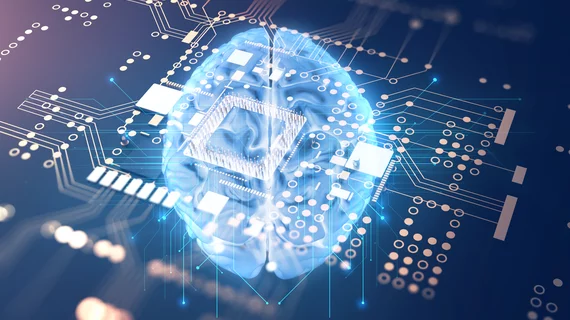A new artificial intelligence algorithm can spot aneurysms overlooked during a radiologist’s initial reading, giving them a powerful support tool for detecting these life-threatening abnormalities.
That’s what researchers from Tongji Medical College’s Union Hospital in China reported Tuesday in Radiology. Their algorithm detected nearly all brain aneurysms present on CT angiography scans, including eight that were originally missed.
“The developed deep learning system has shown excellent performance in detecting aneurysms,” senior author Xi Long, PhD, a radiologist with Union Hospital, said in a statement. “We found some aneurysms that were overlooked by the human readers on the initial reports, but they were successfully depicted by the deep learning system.”
Cerebral aneurysms occur as blood vessels in the brain weaken. CT angiography is the typical go-to for evaluating these conditions, but because they are so small even a highly accurate test such as CTA can miss them.
This also proved to be a problem with the deep learning algorithm, the authors pointed out. Though it was trained on more than 500 patient scans and tested on 649 aneurysms, the model still overlooked very small abnormalities and those located near dense structures such as bone.
Because of this, Long emphasized that their model is more of a sidekick than a lead physician.
“Simply put, the deep learning system is intended to assist human readers, not to replace them,” Long added in the Nov. 3 statement.
The fully automated algorithm was tested on 534 CT angiograms and underwent both internal and external validation. It proved highly accurate, detecting 633 of the 649 brain aneurysms, good for a sensitivity of 97.5%.
Radiologists who used the algorithm gained a slight performance edge, with less experienced readers benefiting the most.
Long et al. also explained that their model produced some false-positive results, accidentally flagging structures similar to aneurysms. The authors plan to address these issues but maintained their tool is meant to augment rads’ interpretations rather than replace them.
“At this time, the role of this deep learning system, which has been trained to recognize aneurysms, is to give suggestions to the human reader to improve their performance and reduce mistakes,” Long added. “The combined work of the human reader and computer system improves the diagnostic accuracy for the patient’s sake.”

